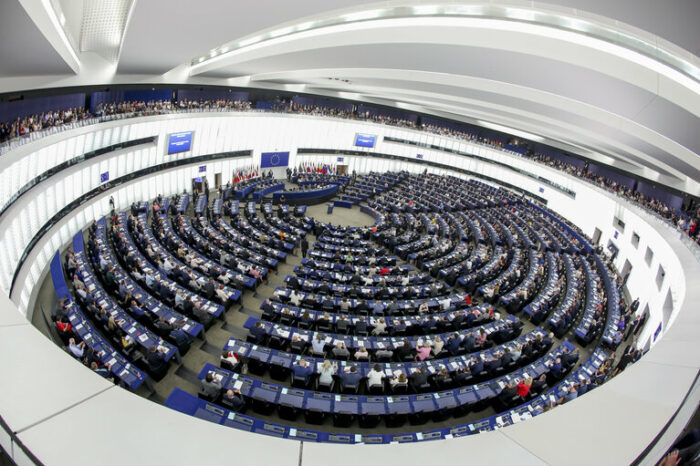The Progressive Post
The far-right Sweden
In the elections in Sweden, the coalition led by Magdalena Andersson and the Social Democrats lost two seats in parliament, from 175 to 173, and thereby lost the majority to a conservative coalition under Ulf Kristersson. It was no landslide, and the new government will, like the previous one, most likely be a complete parliamentary mess. But this is our new normal.
The explanation for this situation is complex, almost intriguing.
The big winners are the Sweden Democrats, a party founded in 1988 by neo-Nazis and neofascists from movements that are directly rooted in the extreme right that survived the second world war. One of its founders, SS-Rottenführer Gustaf Ekström even served in the SS-Hauptamt in Berlin during the war as a propaganda specialist for the Waffen-SS.
Many others of the founders came from the Neo-Nazi Nordiska rikspartiet, a partly violent extremist group with a sun-cross as a symbol and an open Nationalist-Socialist ideology.
Others came from the neo-fascist Nysvenska rörelsen (New Swedish Movement) that was founded in 1930 and was based on a kind of nostalgic national romantic interpretation of Swedish history. Nysvenska rörelsen celebrated warrior kings like Karl XII (who is most famous for losing the battle of Poltava in 1709 and was a general failure, but never mind) and Gustav II Adolphus (who fought in the 30 years’ war on the protestant side and was killed in battle 1632 in Lützen).
The movement didn’t really get any influence (the founder of IKEA, Ingvar Kamprad, was a member for a while) but it created the nationalist mythology, including celebrations like the day of Karl XII’s death (he was shot attacking Norway) on 30 November that was still celebrated by the Sweden Democrats just years ago.
Historically, the Sweden Democrats adhered to an ideology called ‘National democratic’ that was formed by thinkers at the beginning of the last century, but which has developed, during the last ten to fifteen years, into a more right-wing populist movement. However, the ideological roots are still very much present. In this year’s election, 214 of the party’s candidates have connections to nazi or extreme right groups.
The Sweden Democrats are now the second largest party in parliament, and the largest in the government coalition.
Why did they win?
I see three main reasons.
The first is what’s called ‘the cost of government’. The Social Democrats have governed since 2014. To win a third term is very hard. Last year they changed their leader from Stefan Löfven to Magdalena Andersson –that was probably the best shot they had, but it was not enough.
The Social Democrats did a good election with over 30 per cent of the vote. It is the biggest political party in Sweden and in the north of Europe. But two of its allies, the Left and the Centre party (the traditional party of Swedish farmers) failed.
The Conservatives, who will lead the next government, also failed but they are helped by the success of the far right.
The second reason is the election campaign, which was almost entirely centred on gang violence and electricity bills. The Social Democrats failed to get their message across, about schools, healthcare etc.
In a way, Vladimir Putin influenced the elections with his gas war, and by closing the Nordstream pipeline in the middle of the campaign. Bad luck for the government!
Would Magdalena Andersson have won with a different campaign and without Putin? I am not sure. The Swedish electorate is extremely polarised, and to win a third term would have been very complicated, no matter what.
The third reason is the Trumpian politics that dominated the campaign of the right. The conservatives attacked Magdalena Andersson for completely made-up political proposals, they lied, they smeared in a Trumpian fashion. The used attack-ads (a relatively new phenomena here). It worked.
And the right also used internet effectively – especially TikTok and Youtube – so now, first-time voters have massively turned out for the right. It looks like Cambridge Analytica from the Trump campaign all over again.
Why the left was unprepared for these tactics is an enigma for me. But they have some homework to do.
What happens now?
The most likely scenario is a government that changes and evolves over four years but where Ulf Kristersson is prime minister. 176 to 173 is a thin margin and two of his coalition partners, the Liberals and the Sweden Democrats have a history of creating parliamentary problems. The parties in the new coalition don’t agree on economic policy, and with 9 per cent inflation they can’t afford mistakes.
At this point, the most likely scenario is that two of the parties, the Conservatives and the much smaller Christian Democrats, form the new Swedish government for now, but that can very well change in the coming years.
On the other end of the spectrum Magdalena Andersson’s coalition is also unstable. The Centre Party, one of the big losers in the election, will change party leader. The Left Party also shows signs of infighting.
In terms of actual policy, there will be a tilt to a more right-wing and nationalist country: lower taxes, less immigration and less welfare and security for ordinary people. Of foreign policy and European policy I do not expect much to change, Sweden is a consensus-country when it comes to external affairs. The work on our Nato-application will proceed as before.
the election is over – but the political mess is likely to continue. That’s my only definite conclusion!
Photo credits: Shutterstock.com/Martin of Sweden




